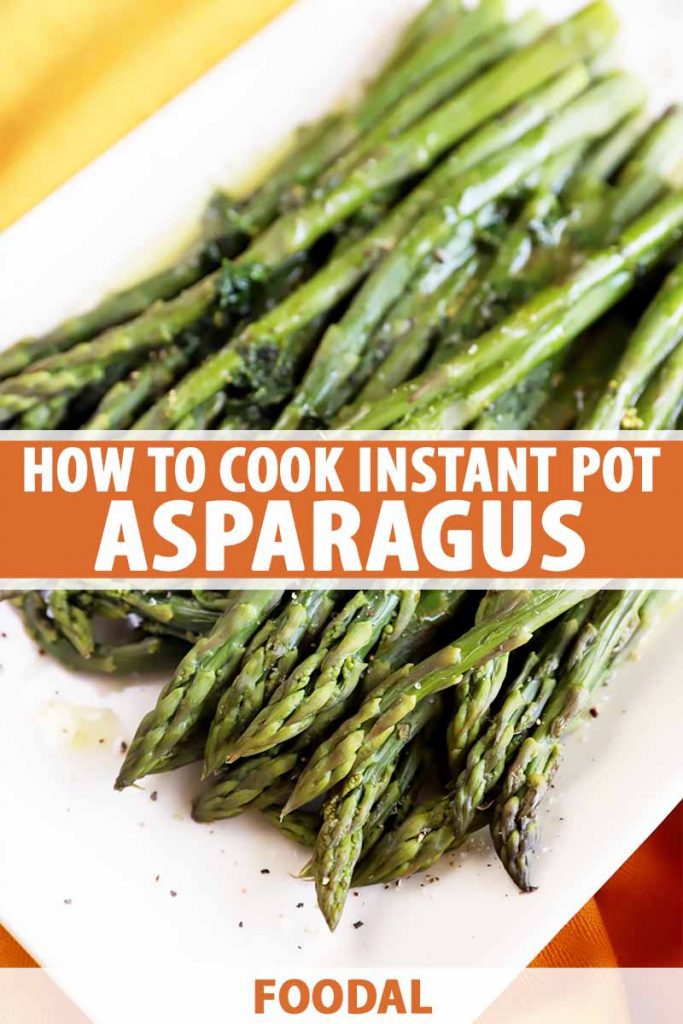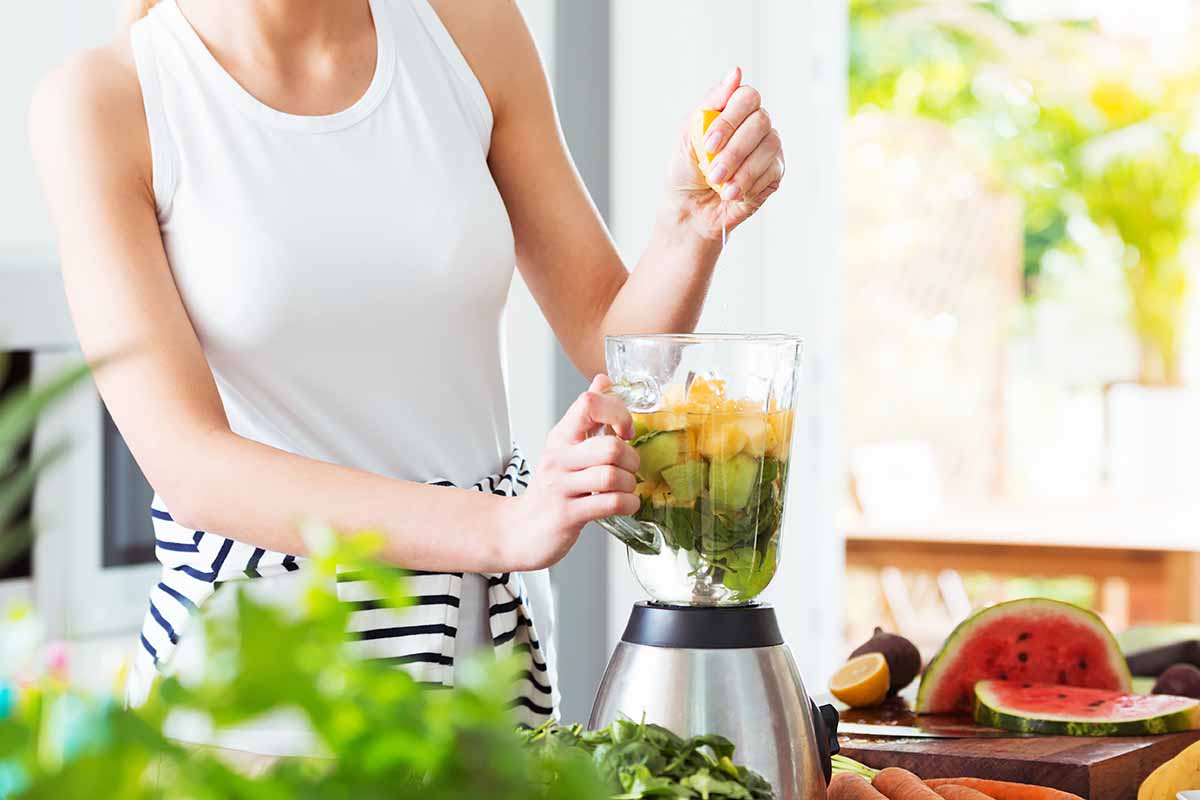When it comes to cooking asparagus, this isn’t really something that’s difficult to accomplish.
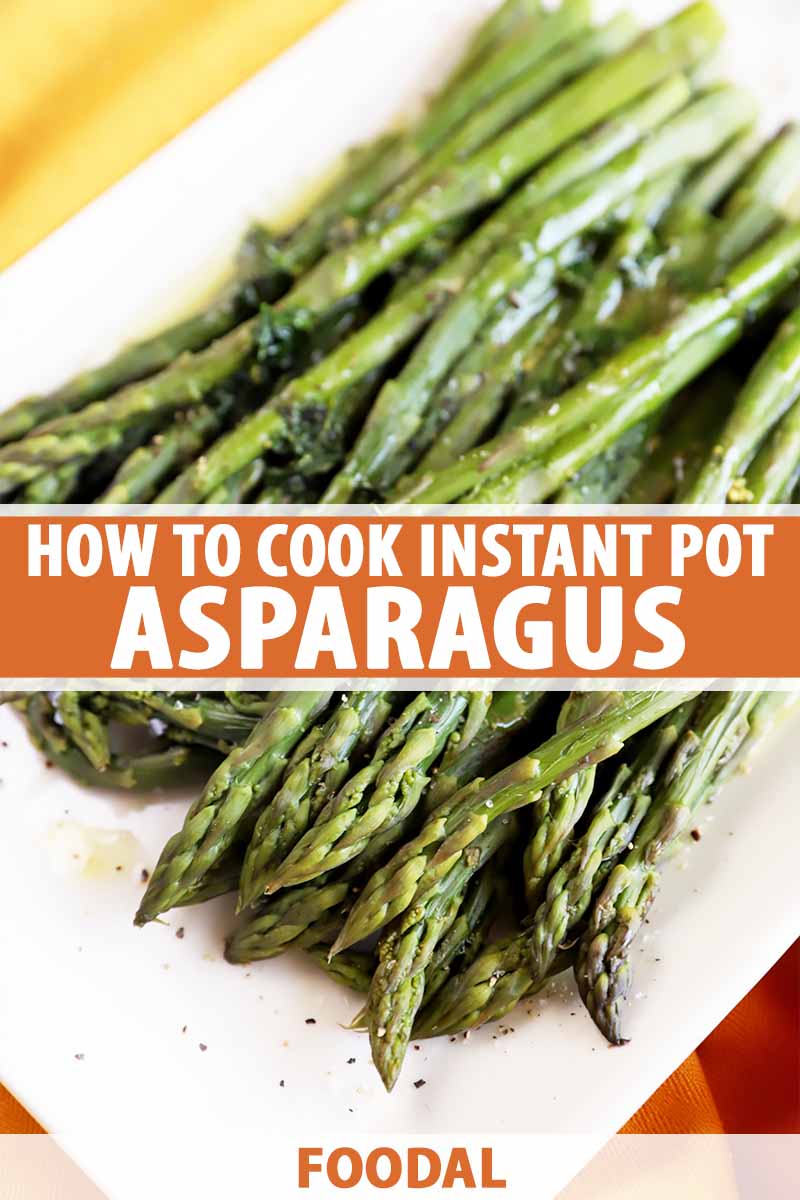
You can easily do it on the stovetop, but of course, that requires bringing pots and pans of water to a boil, or hovering over the stove while you toss and stir (not to mention the dishes you’ll have to wash afterwards).
Of course, you could resort to the microwave. But with a delicate vegetable like this one, that’s pretty much a guaranteed way to turn it into mush.
That’s why I think the best – not to mention the easiest – way to cook asparagus is in your electric pressure cooker or Instant Pot. It’s the hassle-free, hands-off way to steam this vegetable perfectly.
No matter what, it comes out the same way every single time.
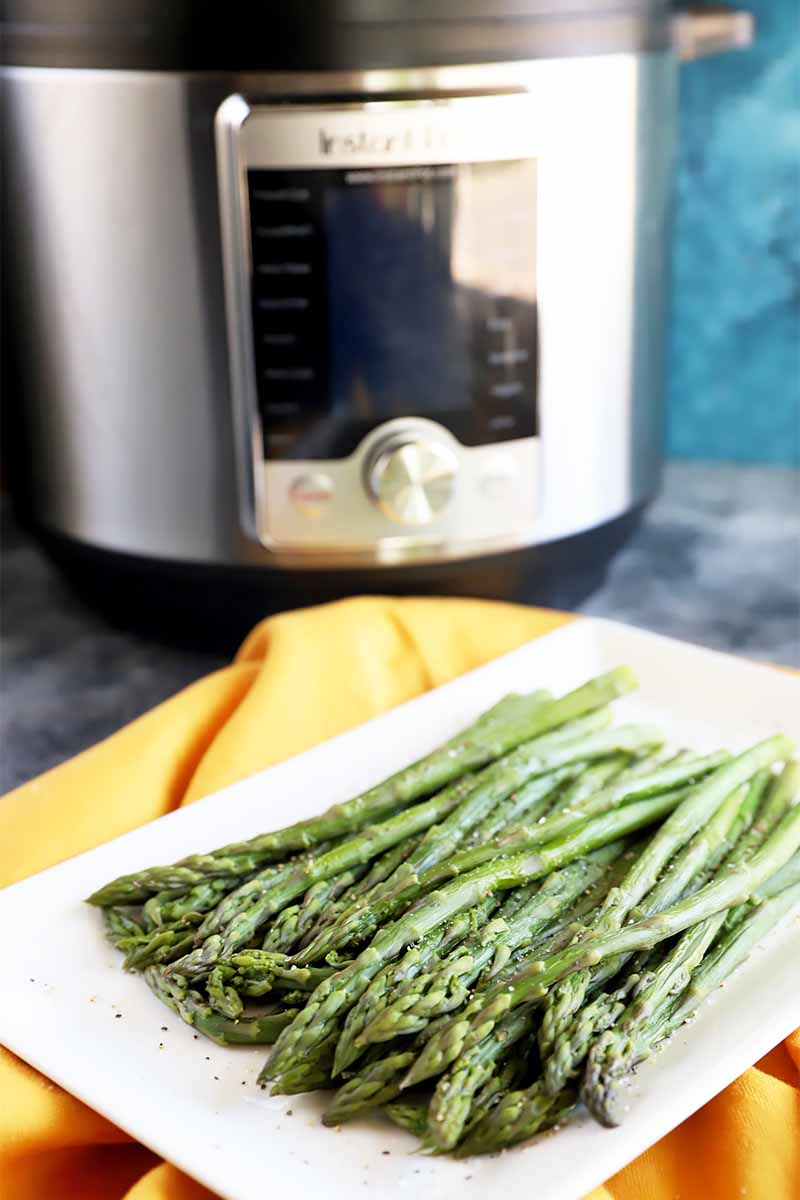
Plus, the pressure cooker does a fantastic job of bringing out the natural sweetness of the green stalks.
Vibrant asparagus just so happens to be one of my favorite green vegetables of all time. Beautifully tender, it’s a healthy choice with incredible flavor.
In fact, when the tasty spears are in season, sometimes I eat them multiple times a week, in a variety of different ways – more on that below.
This vegetable pairs well with pretty much anything I can think of, and when you know how to cook it properly, it really satisfies! And it’s totally worth the smelly bathroom trips, a common reaction to consuming the spears!
Ready to learn my tricks to electric pressure cooker perfection? Here’s what’s ahead in this article:
What You’ll Learn
How Do I Pick the Perfect Bunch?
How Can I Tell If It’s Gone Bad?
Seasoning and Serving Suggestions
How Do I Pick the Perfect Bunch?
When you are selecting your produce at the farmers market or grocery store, look for stalks that are bright green and firm. Make sure they are not dried out at the bottom – this indicates that they weren’t cut recently.
I like to look for medium to large-sized spears so they won’t overcook easily.
How Can I Tell If It’s Gone Bad?
The first thing that goes bad with this vegetable is the tips. They will start to become mushy or black on top, and that’s your cue that it’s time to toss it. Another thing to watch out for is limp or slimy stalks.
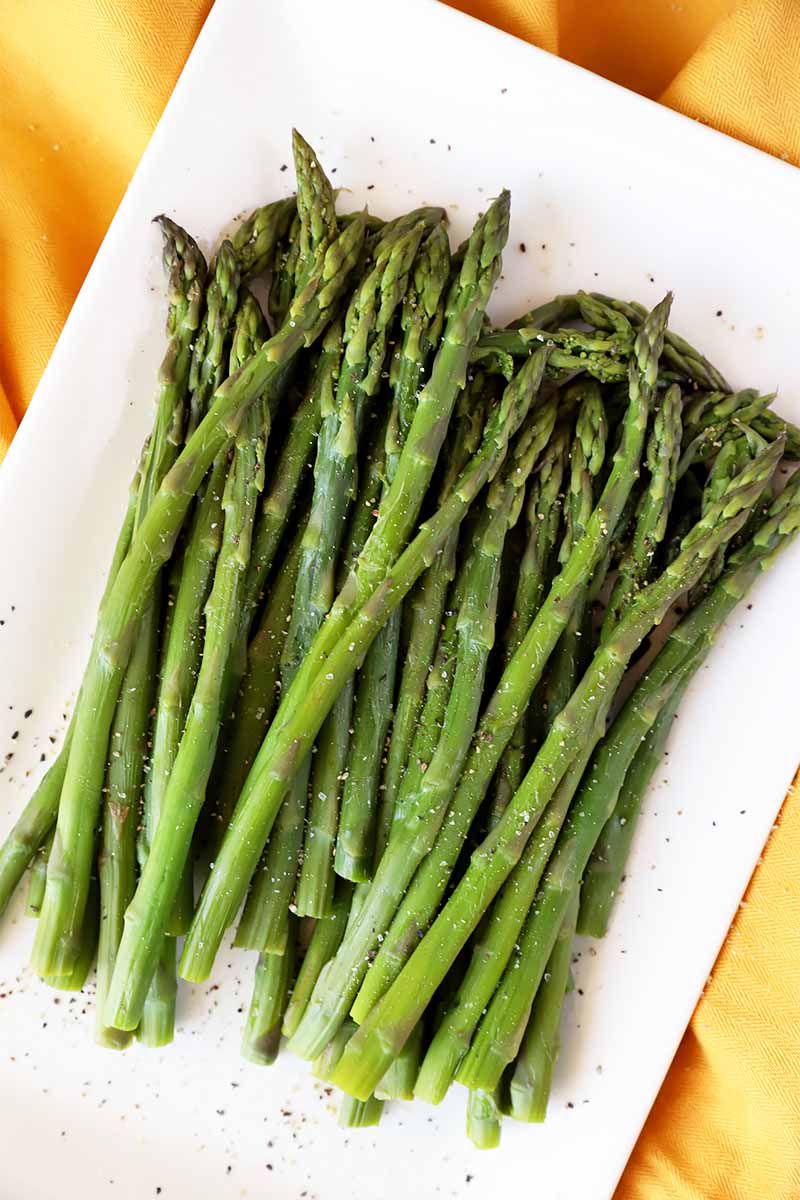
If stored in the crisper drawer in your refrigerator, they will keep for 2 to 4 days.
If you want your vegetables to last longer, you can trim the bottom of the stalks by about half an inch. Fill a mason jar or container that won’t tip over with about an inch of water and stand the trimmed spears in the jar.
Loosely cover with a produce bag and you may store them this way in the refrigerator for up to 7 days. If the water gets cloudy, replace it immediately with fresh water.
Seasoning and Serving Suggestions
As I mentioned above, asparagus is on the menu at our house regularly when it is in season.
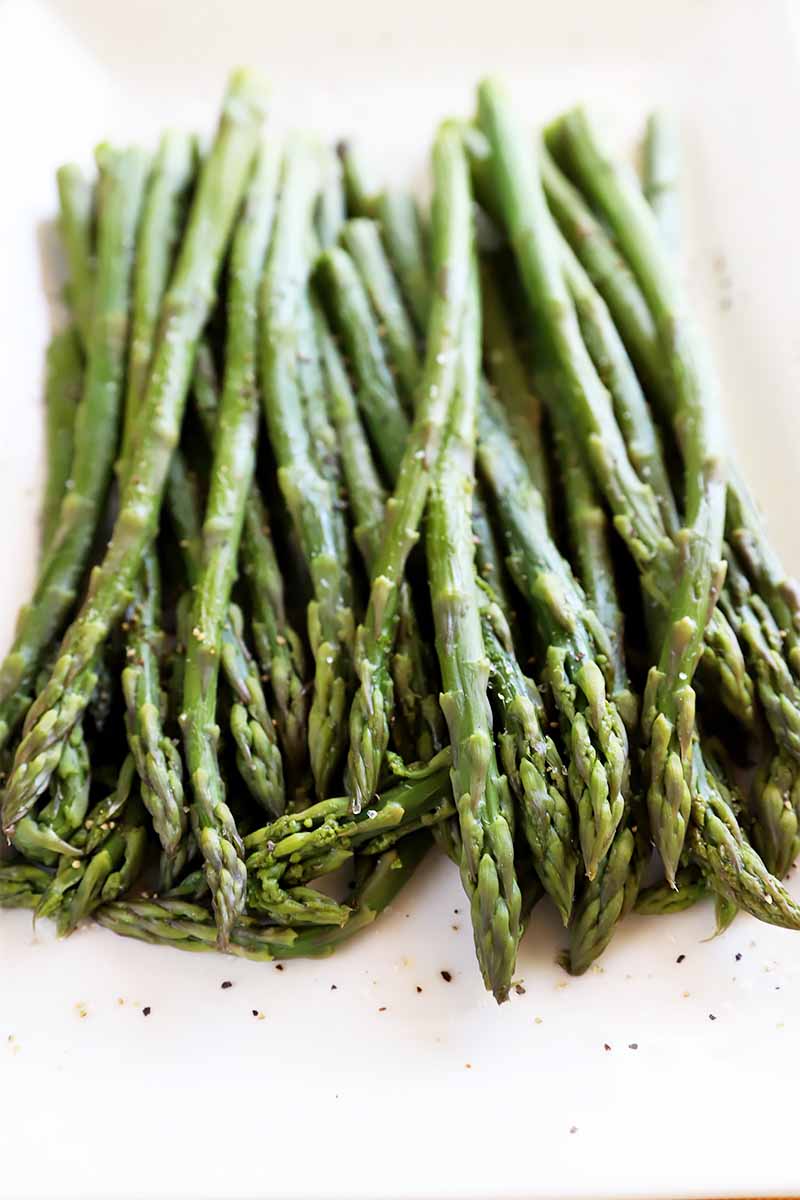
Even though I love this delicious springtime vegetable the most, to avoid getting too repetitive, I need to mix up the ways that I serve this steamed veg so we won’t get bored with it.
Below are some of my favorite ways to serve asparagus. You can serve it as a side dish, but it can also be incorporated into main dishes, savory breakfast items, and more.
Lemon Dressing
The magical combination of the juice of half a lemon, 1/2 teaspoon Dijon mustard, and 1 teaspoon of chopped fresh herbs (parsley, basil, oregano, etc.) makes for a delightfully bright topping for pressure cooked asparagus. Add some toasted almonds for an amandine-inspired dish.
Hollandaise
This is a creamy classic topping that you can make on the stove, or check out our recipe for magic blender hollandaise.
Salt, Pepper, and Garlic Powder
Sometimes, nothing can beat highlighting the taste of fresh asparagus with the simplest of preparations. That means keeping things plain and simple with minimal seasoning, and maybe just a touch of your choice of butter or oil. You can also make a compound butter with your favorite spices and herbs!
On Toasted Bread
I LOVE making crostini that feature asparagus as the main ingredient. You can put ricotta on the slices of toasted bread as well, or try it with a poached egg on top for breakfast.
On Pizza
Chop up a few cooked stalks of asparagus into 1-inch pieces, then throw them on top of a homemade pizza. One of my favorite combinations of toppings is to serve it with a bunch of other seasonal veggies like zucchini, arugula, and peas.
In Pasta
You can freshen up any pasta dish when you add 1-inch pieces of cooked stalks to the mix. I especially like it with penne or farfalle, tossed in a creamy light lemon sauce.
It’s also an amazing addition to heartier pasta dishes, like in our grilled chicken, asparagus, and sun-dried tomato pasta with pesto.
In Risotto
This vegetable brings a bright pop of green freshness to a creamy risotto. I think it’s especially tasty when you add pieces of rotisserie chicken or smoked salmon.
How to Cook Asparagus in the Electric Pressure Cooker
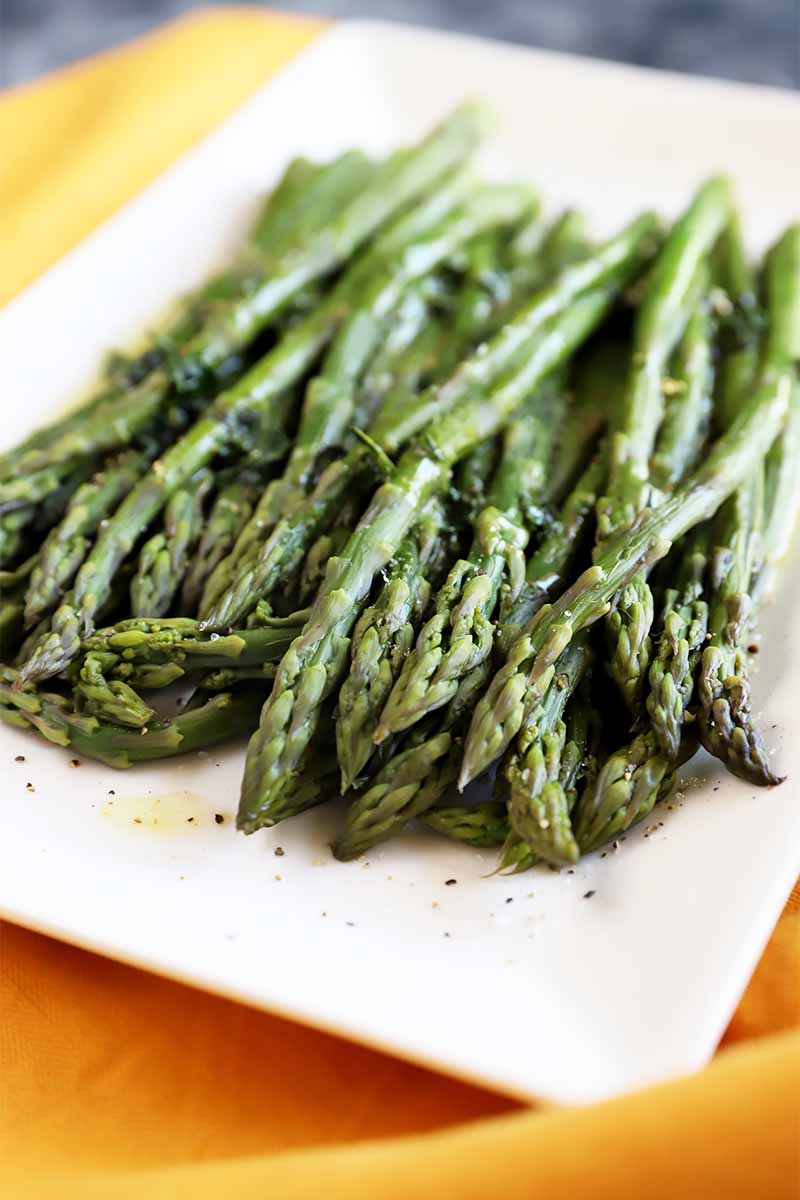
While you might think the pressure cooker is reserved for preparing tougher cuts of meat, it is actually a fantastic tool for getting your vegetables cooked quickly. The result is the same every single time, and the mostly hands-off method makes getting dinner on the table even easier.
Step 1 – Prep Vegetables and Measure Water
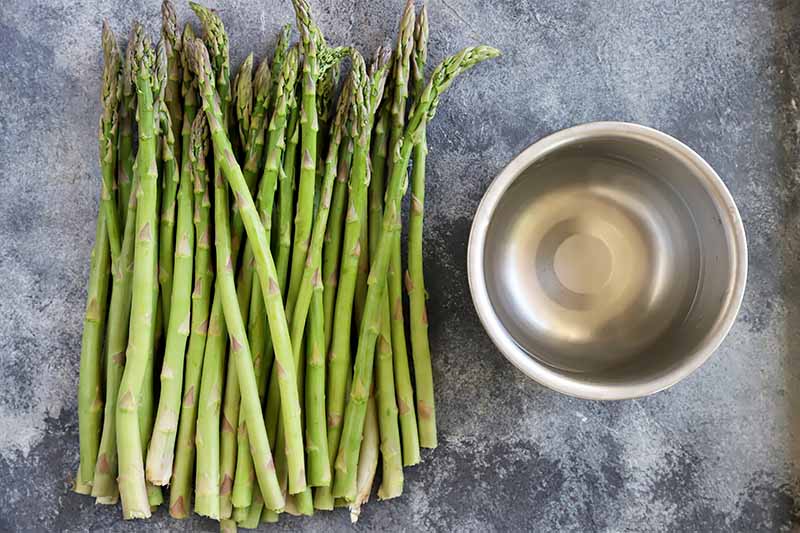
To get started, in addition to your electric pressure cooker and a trivet or steamer basket, you will need:
- 1 bunch asparagus
- 1 cup water
Rinse the stalks to remove any dirt, then pat them dry. Trim the ends of each stalk and discard.
Measure 1 cup of water.
Step 2 – Pressure Cook
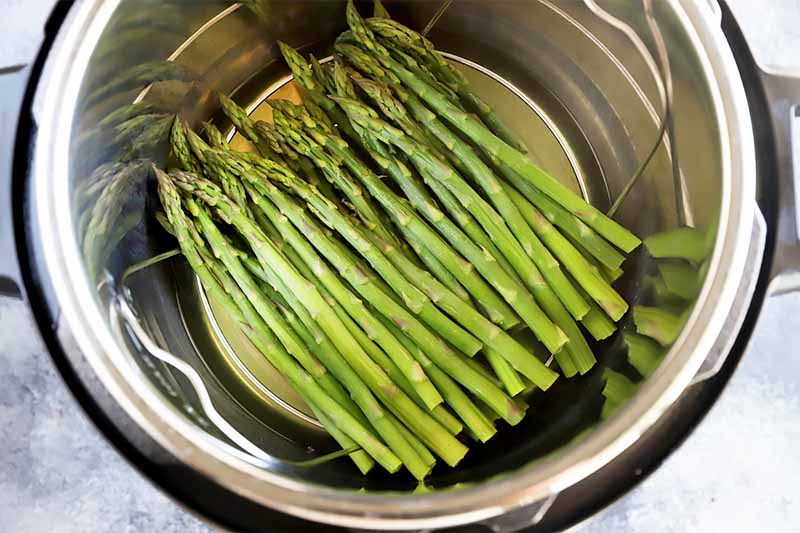
Pour the water into the insert of your electric kitchen appliance. Place the trivet or a steamer basket sized to fit your appliance inside.
Arrange the prepped stalks on the trivet. Seal the lid and set to Manual.
Cook on High pressure for 1 minute if the stalks are thick, or 0 minutes if the stalks are on the thinner side. This does not mean you will actually be cooking for zero time, but rather, this is the amount of time the appliance will continue to cook for after it comes up to pressure.
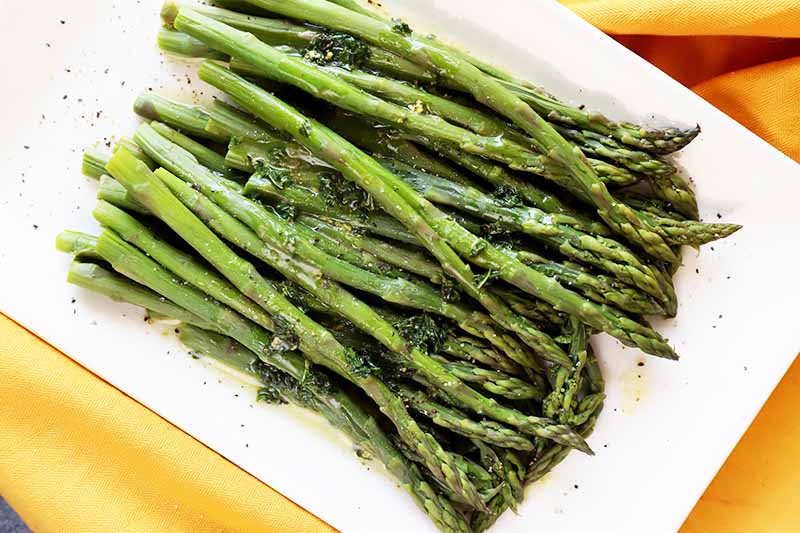
Keep an eye on your appliance, and manually release the pressure as soon as cooking is done.
Season with salt and pepper or one of my suggestions above before serving, or use the cooked spears in omelets, quiche, or your favorite asparagus recipes.
Can I Store the Leftovers?
Any cooked leftovers (if you didn’t eat them all!) can be stored in an airtight container in the refrigerator for up to 3 days.
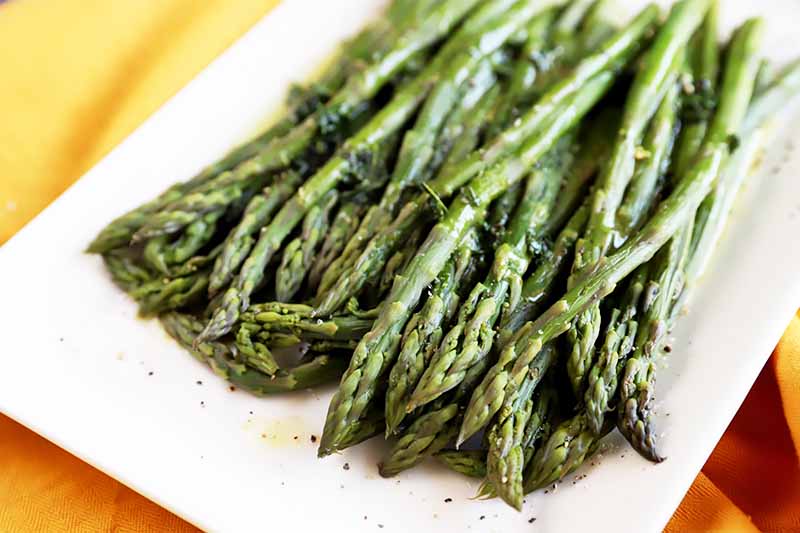
The only issue that I think it’s important to point out is that this vegetable doesn’t reheat well. If you pop it in the microwave, it will end up getting mushy, and no one enjoys that.
My suggestion is to serve any leftovers chilled, to retain their tasty texture. Simply chop the stalks and add them to salads, like our fruity asparagus salad with tomatoes and strawberries, or grain bowls.
Looking for even more ideas for how to use your electric pressure cooker? Check out these suggestions from Foodal next:
- asparagusHow to Make Pulled Pork in an Electric Pressure Cooker
- The Best Instant Pot French Onion Soup
- How to Cook Brown Rice in an Electric Pressure Cooker
How do you like to enjoy this vibrantly hued vegetable? Tell us in the comments below!
Photos by Meghan Yager, © Ask the Experts, LLC. ALL RIGHTS RESERVED. See our TOS for more details. With additional writing and editing by Allison Sidhu.
About Meghan Yager
Meghan Yager is a food addict turned food and travel writer with a love for creating uncomplicated, gourmet recipes and devouring anything the world serves up. As the author of the food and travel blog Cake 'n Knife, Meghan focuses on unique foodie experiences from around the world to right at home in your own kitchen.

